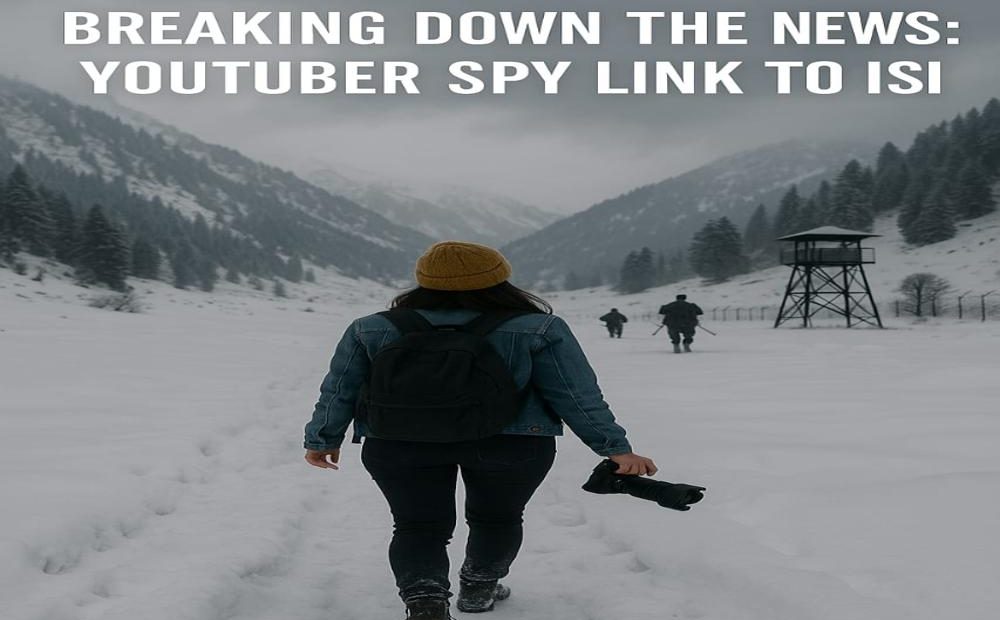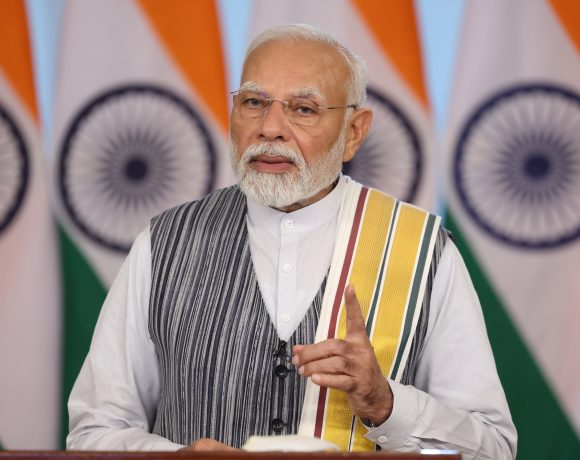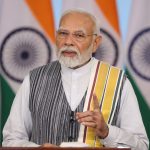
Breaking Down The News: YouTuber Spy Link to ISI
A shocking case of espionage has emerged from Haryana, where a popular YouTuber known as Jyoti Malhotra, who ran the travel channel “Travel with Jo,” was arrested by Hisar Police for allegedly spying on behalf of Pakistan’s notorious intelligence agency, ISI. Malhotra, whose online persona revolved around travel vlogging, particularly across Jammu and Kashmir, is now at the center of a growing investigation linking creator influencers to intelligence gathering operations. Authorities claim that under the cover of civilian tourism and cultural engagement, Malhotra transmitted sensitive information concerning strategic Indian locations to Pakistani handlers, raising alarms about the misuse of India’s unregulated creator economy.
Her arrest came as part of a broader intelligence sweep in Punjab and Haryana following multiple instances of suspicious cross-border communications. Indian intelligence agencies had already been tracking encrypted chatter from devices associated with civilian IDs, and Malhotra’s name emerged through phone surveillance and financial link tracing. The YouTuber was formally arrested on May 17 and charged under sections of the Official Secrets Act, 1923 and Section 152 of the Bharatiya Nyaya Sanhita. Police claim she was in continuous contact with Pakistani intelligence operatives using WhatsApp, Telegram, and Snapchat. Upon her arrest, investigators recovered communications and cloud uploads believed to contain unedited video and GPS-tagged data from sensitive regions.
Investigators have revealed that Jyoti Malhotra’s espionage trail began with what appeared to be an innocuous social event. She was invited to an Iftar party at the Pakistan High Commission in New Delhi in 2023, where she came into contact with Ehsan-ur-Rahim, also known by his alias Danish, a staff member at the mission. Danish had previously been flagged by Indian intelligence for suspicious outreach activities and was later expelled from India. It was through him that Malhotra was allegedly introduced to two known ISI operatives: Shakir and Rana Shahbaz. These introductions, initially positioned as cultural collaborations and cross-border goodwill exchanges, soon escalated into operational briefings.
According to interrogation reports, Malhotra visited Pakistan twice in 2023. Her visas were arranged through intermediaries, and the trips were framed as cultural and religious travel. However, authorities believe that these visits were instrumental in her being groomed, briefed, and tasked. She was allegedly trained to avoid detection, instructed on what areas to film subtly, and how to transfer data securely through cloud-sharing platforms and encrypted apps.
Her contacts in Pakistan reportedly gave her specific instructions to capture civilian-military infrastructure in regions that were otherwise difficult for official spies to penetrate without arousing suspicion. As a travel vlogger, she had the perfect cover — a camera, an audience, and plausible deniability. In return, she was compensated through informal channels and digital wallets. Intelligence sources believe she was part of a growing network of “civilian informants” being cultivated as part of ISI’s new-generation reconnaissance program that leverages social media content as intelligence input.
Authorities have now pieced together a disturbing picture of how Jyoti Malhotra’s YouTube channel was allegedly used as a front for reconnaissance missions. Her assignment was not to capture overtly classified installations — that would raise immediate red flags. Instead, her handlers reportedly tasked her with collecting what intelligence agencies refer to as “soft logistics data.” This included high-resolution visuals of terrain near Army convoys, the approach routes to military training zones, and subtle documentation of Army-civilian interaction points that reveal troop acclimatization routines or vehicular supply lines.
Her filming focused on civilian-accessible points near sensitive areas — roads adjoining high-altitude warfare training facilities in Gulmarg, bridges used by military supply units near Sonamarg, and bypasses close to Banihal Tunnel which serve as lifelines for Jammu-Srinagar movement. She was also allegedly told to avoid drone use and instead capture discreet ground footage, often while posing as a solo traveler seeking “raw, offbeat beauty.” The footage was then shared in unlisted formats or uploaded to encrypted folders accessible only through anonymous login credentials shared with her handlers.
The concern deepened when her travel pattern from December 2024 to January 2025 was reviewed. During this window, Malhotra traveled extensively through South and Central Kashmir. She visited Pahalgam, Achabal, Daksum, Kokernag, Sonamarg, and Gulmarg — all in the span of a few weeks. These are not places tourists typically cover in a single circuit, and some, like Daksum and Kokernag, have little civilian infrastructure and lie close to areas of high military operations. Her stay logs indicate unusually long durations in these low-footfall areas, raising concerns that she was conducting systematic terrain familiarization, likely feeding geotagged footage to ISI contacts for mapping and mission preparation.
What makes this episode even more concerning is the timing and possible downstream consequences of the reconnaissance allegedly carried out by Jyoti Malhotra. Just weeks after her extensive travel through Kashmir, particularly Pahalgam, a disturbing pattern was noticed by data researchers monitoring satellite tasking across the region.
In February 2025, defense analysts identified a sharp spike in satellite image requests for the Pahalgam sector. These requests were routed through BlackSky Intelligence (BSI), a private satellite imagery contractor with historical links to Maxar — the same vendor believed to have supplied imaging to US and NATO intelligence agencies. What stood out was the frequency and resolution detail of the imagery: multi-pass, high-density, and timed with weather clearances, which are often used to identify terrain movement feasibility or target mapping in low-altitude winter conditions.
Given that Malhotra had just completed her ground-level filming of the same region in December-January, investigators are now evaluating the possibility that her reconnaissance may have enabled a more targeted satellite acquisition campaign by foreign agencies. When viewed in the context of the Kirana Hills incident and India’s retaliatory Operation Sindoor, the dots begin to connect in troubling ways. It cannot be ruled out that her footage helped refine satellite mapping or movement predictions, even if she herself was unaware of the final objective.
This convergence of civilian surveillance and military interests has highlighted an alarming blind spot in India’s counter-espionage framework: content creators operating with unrestricted access in high-risk areas.
What began as a travel vlogging career for Jyoti Malhotra has now unravelled into a cautionary tale of how India’s booming creator economy — unregulated, unguided, and vulnerable — is being exploited by hostile foreign entities. In a country where access to sensitive border regions, dual-use infrastructure, and military-adjacent zones is often granted on the basis of tourism and social media popularity, it has become alarmingly easy for “influencers” to become conduits of intelligence, willingly or otherwise.
The pursuit of likes, views, and viral content has created a perfect hunting ground for foreign spy agencies looking to tap into open-source intelligence without risking official agents. Every Tom, Dick, and Harry with a camera is now a potential surveillance node. And when that ambition to go viral intersects with money, visa offers, or ideological manipulation, the results can be catastrophic.
Jyoti Malhotra may be only the first of many to be exposed, but her case is symptomatic of a larger national vulnerability. As India continues to modernize its internal security frameworks and fight hybrid warfare on multiple fronts — from drones to disinformation — it cannot afford to leave the influencer space outside its regulatory purview.
It is now imperative for the Government of India to:
Mandate pre-clearance or geo-permission for content creation in border and strategic areas
Raise awareness among vloggers and creators about information sensitivity
Institute punishments for unauthorized recording of dual-use infrastructure
Because if India does not draw a line between a tourist and a spy, someone else will — with devastating consequences.


















